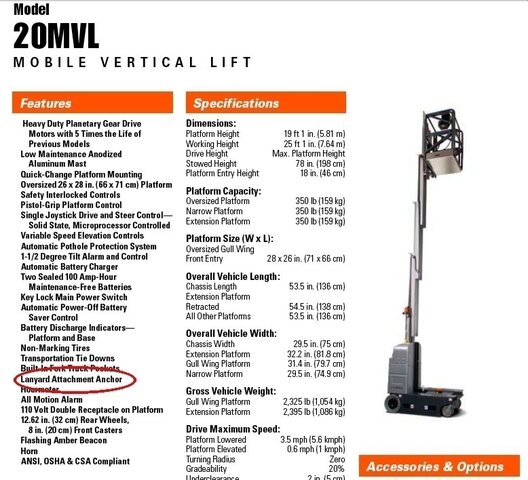In our theatre, we have a few different applications, none of which necessarily require the use of a harness, although a harness is suggested. Specifically, our FOH catwalk and scissor lift use.
As per the suggestion of an ETCP rigger we contracted in to perform some work for us, we purchased a fall arrest harness. So far I've been the only one to use it on a handful of occasions. Only once would I have not performed worked without it, the other times being applications where I would've felt safe on our catwalk with the harness being more a formality and example to students walking around the venue than anything else.
The problem I have is that we have no procedure in place for someone who has fallen while wearing a harness. Given the locations a harness is used, people can readily access the positions a harness would be secured to, and could possibly pull a person up. Still, dead-lifting someone 15', possibly unconscious, and then having pull them through the railings of the catwalk is not ideal. Conversely, I wouldn't want our solution to be to simply tie a rope to the end of the lanyard and then have a team of EMS personnel lower the victim to ground level. That's putting a lot of faith in responders' physical capabilities. Aside from that, there's only so much time a person can be in a harness, dangling from a structure before they have severe complications.
So what's the next action I should pursue on formulating a response plan for someone having fallen? Bearing in mind that we fall into a gap that leaves us with only a couple people who would ever use the harness and rather than deal with the complications of what-if's, would rather not a wear a harness but still lean out over the catwalk railings to put gels in the fixtures, replace lens tubes, and such forth.
I certainly want to coordinate with the fire department, but don't want to rely on them for advised working at heights practices.
Is this an OSHA thing or will a well-rounded ETCP rigger suffice for telling us how we're doing it wrong?
As per the suggestion of an ETCP rigger we contracted in to perform some work for us, we purchased a fall arrest harness. So far I've been the only one to use it on a handful of occasions. Only once would I have not performed worked without it, the other times being applications where I would've felt safe on our catwalk with the harness being more a formality and example to students walking around the venue than anything else.
The problem I have is that we have no procedure in place for someone who has fallen while wearing a harness. Given the locations a harness is used, people can readily access the positions a harness would be secured to, and could possibly pull a person up. Still, dead-lifting someone 15', possibly unconscious, and then having pull them through the railings of the catwalk is not ideal. Conversely, I wouldn't want our solution to be to simply tie a rope to the end of the lanyard and then have a team of EMS personnel lower the victim to ground level. That's putting a lot of faith in responders' physical capabilities. Aside from that, there's only so much time a person can be in a harness, dangling from a structure before they have severe complications.
So what's the next action I should pursue on formulating a response plan for someone having fallen? Bearing in mind that we fall into a gap that leaves us with only a couple people who would ever use the harness and rather than deal with the complications of what-if's, would rather not a wear a harness but still lean out over the catwalk railings to put gels in the fixtures, replace lens tubes, and such forth.
I certainly want to coordinate with the fire department, but don't want to rely on them for advised working at heights practices.
Is this an OSHA thing or will a well-rounded ETCP rigger suffice for telling us how we're doing it wrong?



